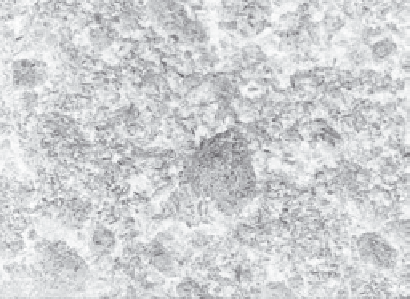Environmental Engineering Reference
In-Depth Information
aluminum sheeting, cut to size. Three front-tine rototillers (12 in. depth) were
used to mix and aerate the soil and amendments. When not in use, the
rototillers were mounted inside each trough in order to contain the contam-
inated soil and reduce the possibility of bacterial cross-contamination. Con-
struction details are provided in Nestler et al. (2001a). The assembly of the
trough pilot units is illustrated in Figure 7.11. Panel A shows the color and
consistency of the contaminated soil added to each trough. In Panel B, rice
hulls (light color) and dried blood (darker color) were added to troughs 2
and 3 and mixed into the soil by rototiller. Gas probes were inserted into all
troughs to monitor microbial respiration (panel C).
The test soil was placed in troughs 2 and 3 to a depth of 6 in. and treated
with amendments as designated in the experimental design, yielding a final
depth of 12 in. These troughs were managed in a manner to simulate
land-farming applications. Trough 1, which received no amendments, was
filled with 12 in. of contaminated soil. The rice hulls used in troughs 2 and
3 were applied at 1:1 volume with the soil. The changes in the soil texture
following addition of the rice hulls can be seen in Figure 7.12.
The nitrogen was applied at a rate of 2% of the soil (w/w). Soil and
amendments were thoroughly mixed, and the moisture level was checked
and brought up to 80% of the FMC. The soil was mixed again to distribute
the added water. The vermiculite culture was added to trough 3, also at 2%
w/w concentration with the soil, and again thoroughly mixed. The soil was
sampled (t = 0) and raked to fill the sampling holes, and the dry wells for
microbial respiration inserted. Initial soil respiration samples were obtained
following placement in the troughs.
7.3.9 Pilot-scale materials
The amendments used in the trough study, the ground rice hulls, dried
blood, and vermiculite were obtained from the same suppliers to the same
Figure 7.12
Change in soil texture following addition of the rice hulls as bulking
agent.

